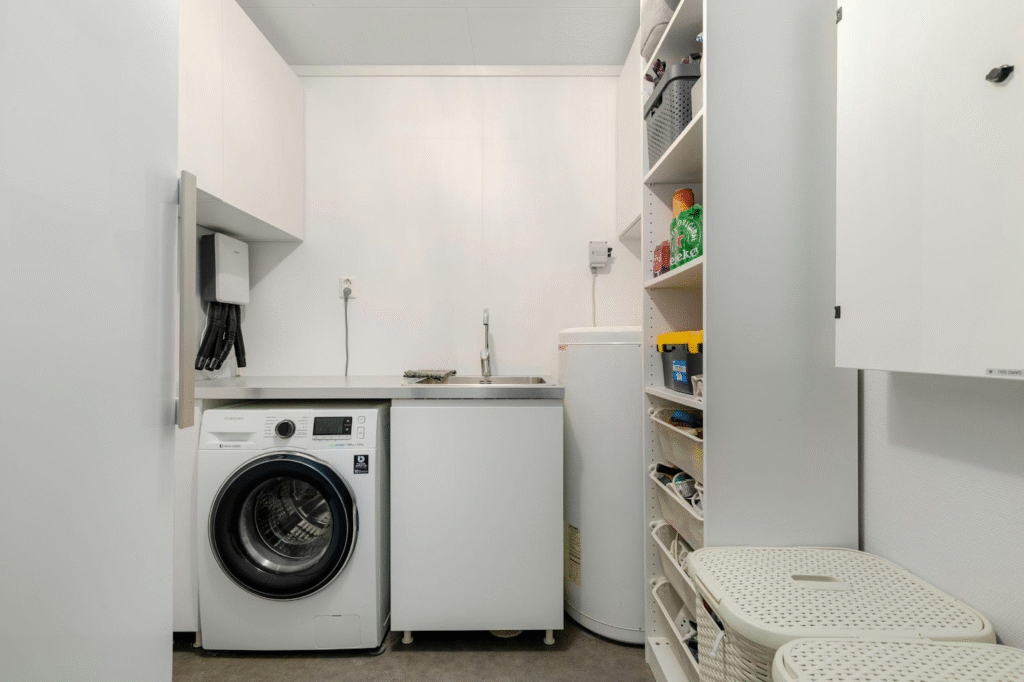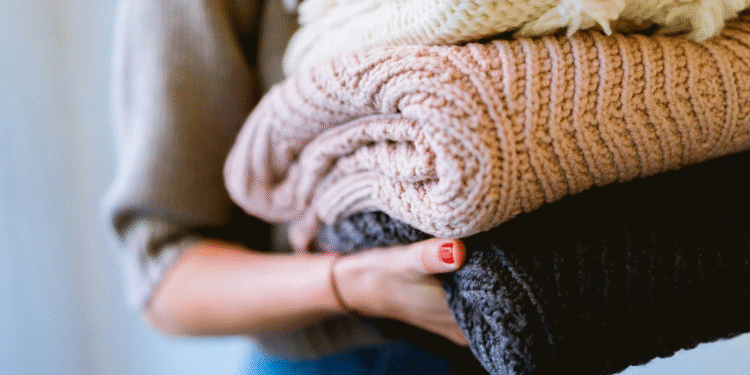Image from Unsplash
If there’s one chore universally filed under “necessary evil,” it’s laundry. It piles up silently, consumes hours of weekend freedom, and often requires juggling between sorting, measuring, folding, and sighing loudly. Yet, in the spirit of minimalism, laundry doesn’t have to be this complicated. With a few tweaks in routine and mindset, even the most stubborn pile of socks and sweatshirts can be tamed. For instance, using space-saving, eco-conscious options like Clean People right from the start can cut down both the clutter and mental load of laundry day.
So, how do you turn a chaotic corner of your home into a clean, minimalist system that doesn’t eat your sanity every week? Let’s dive into it.
The Mental Weight of Laundry
Laundry isn’t just a physical chore; it takes up mental real estate. The constant awareness that a hamper is filling up or that clothes are sitting, wrinkling in the dryer can silently stress us out. In minimalist living, every task is evaluated not just by how long it takes, but how much space it occupies in your head.
Laundry, when left unmanaged, turns into a silent saboteur of simplicity.
Step One: Downsize Your Wardrobe
This may feel drastic, but it’s revolutionary. Fewer clothes mean less to wash, less to fold, and less to store. When your closet contains only what you truly wear and love, it naturally reduces the volume of laundry. Capsule wardrobes, for example, typically contain about 30–40 items per season.
Minimalist laundry begins before you ever open the washing machine, it starts in your closet.
Step Two: Streamline Your Supplies
Open most laundry rooms and you’ll find a clutter of half-used detergent jugs, fabric softeners, scent beads, and stain removers that expired sometime during the Obama administration. Minimalism calls for simplification.
This is where modern, eco-friendly options come into play. Products like Clean People laundry detergent sheets eliminate the need for bulky jugs, messy measuring, and multiple rinse cycles. Pre-measured and plastic-free, they align perfectly with minimalist values: functional, space-saving, and environmentally conscious.
Not only does this reduce physical clutter, it simplifies decision-making, no more wondering which soap to use or whether you’re adding too much.
Step Three: Establish a Predictable Routine
Batching laundry, like batch-cooking, brings order to chaos. Choose one or two specific days each week for laundry and stick to them. Doing small, manageable loads regularly beats waiting for a mountain to rise before attacking it. A minimalist routine respects your time and prevents the mental mess of laundry procrastination.
You can also organize laundry tasks by family member or category (e.g., towels on Tuesday, clothes on Thursday) to prevent bottlenecks. Predictability reduces decision fatigue.
Step Four: Design a Functional Laundry Space

Image from Unsplash
You don’t need a sprawling laundry room to create efficiency. Even a corner closet can become a minimalist hub with a few adjustments:
- Install vertical shelves to keep essentials in sight but not scattered.
- Use uniform baskets or bins to reduce visual clutter.
- Keep only what you use weekly, donate or toss the rest.
A tidy space leads to a tidy system. The less you have to look at, the more peace you have while working.
Step Five: Rethink What Needs Washing
Surprisingly, a lot of items get washed more often than necessary. Not everything worn once is dirty. Unless clothes are visibly soiled or carry odor, they can often be aired out and reused before laundering.
According to the Environmental Protection Agency (EPA), reducing the frequency of washing clothes conserves significant water and energy over time. Fewer loads mean less wear on fabrics, lower utility bills, and a lighter environmental footprint, all hallmarks of minimalist values.
So before tossing that pair of jeans into the wash, ask yourself: is it really dirty, or just wrinkled?
Step Six: Embrace Air Drying
Dryers are convenient but energy-intensive and often harsh on clothes. A minimalist approach embraces tools like foldable drying racks, wall-mounted lines, or even balcony setups that let clothes dry naturally.
Air drying isn’t just good for the planet, it extends the lifespan of your wardrobe and keeps your laundry process gentler, quieter, and simpler.
Step Seven: Fold and Store with Intention
Finishing laundry often drags on because of the final step: folding and putting everything away. But if your wardrobe is minimal and your system is streamlined, this becomes a ten-minute task, not a dreaded project.
Adopt folding techniques that save space (Marie Kondo-style vertical folding works wonders) and store clothes in a way that makes everything visible at a glance. When things are easy to access, they’re easier to maintain.
Minimalism Isn’t About Doing Less, It’s About Doing Better
At its core, minimalist laundry isn’t about skipping chores or cutting corners. It’s about doing what matters with clarity and efficiency. By curating your wardrobe, simplifying your tools, and designing thoughtful routines, you make laundry less of a burden and more of a breeze.
And as silly as it may sound, starting with something as small as laundry detergent sheets, like those from Clean People, can lead to broader shifts. You notice what brings ease. You recognize what you can live without. You start treating your home not just as a storage unit, but as a sanctuary.
Laundry may never become your favorite task, but it doesn’t have to be your most hated either. With a minimalist approach, it transforms from a time-consuming annoyance into a streamlined ritual. Fewer clothes, fewer steps, less waste, and more peace of mind.
In the end, simplicity doesn’t just look good on a shelf, it feels good in your routine.













